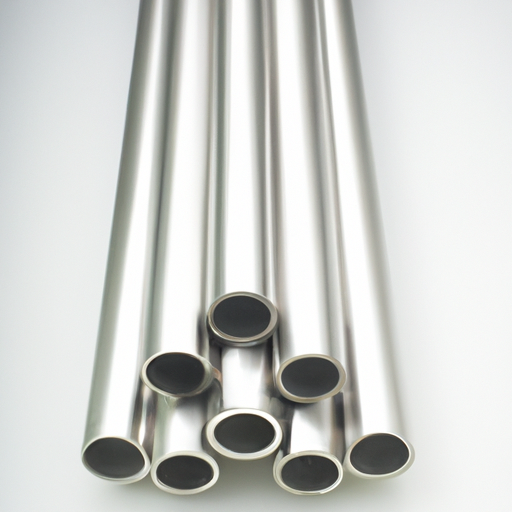
Classifications of Heat Resistance Grades of Diesel Resistant Heat Shrink Tubing
I. Introduction
Heat shrink tubing is a versatile and essential component in various industrial applications, particularly in the automotive and aerospace sectors. This specialized tubing is designed to shrink in diameter when heat is applied, providing a tight, protective covering over wires, cables, and other components. In diesel applications, where exposure to high temperatures and aggressive chemicals is common, the importance of heat resistance cannot be overstated. This article aims to explore the classifications of heat resistance grades of diesel-resistant heat shrink tubing, providing insights into their properties, applications, and selection criteria.
II. Understanding Heat Shrink Tubing
A. Composition and Manufacturing Process
Heat shrink tubing is typically made from materials such as polyolefin, PVC, and fluoropolymers. The choice of material significantly influences the tubing's performance characteristics, including its heat resistance, flexibility, and chemical compatibility. The manufacturing process involves extruding the material into a tube and then heating it to create a "memory" that allows it to shrink when exposed to heat.
B. Applications of Heat Shrink Tubing
Heat shrink tubing serves multiple purposes, including:
1. **Electrical Insulation**: It provides a protective layer that prevents electrical shorts and enhances safety.
2. **Mechanical Protection**: The tubing shields wires and cables from abrasion, impact, and environmental factors.
3. **Environmental Sealing**: It creates a moisture-resistant barrier, protecting components from corrosion and degradation.
III. The Need for Diesel Resistant Heat Shrink Tubing
A. Characteristics of Diesel Fuel
Diesel fuel is a complex mixture of hydrocarbons, which can vary in composition based on the source and refining process. Its chemical properties can be aggressive towards certain materials, leading to degradation over time.
B. Importance of Heat Resistance in Diesel Environments
In diesel applications, components are often subjected to significant temperature fluctuations and prolonged exposure to diesel fuel and other chemicals. Therefore, heat resistance is crucial to ensure the longevity and reliability of heat shrink tubing in these environments.
IV. Classifications of Heat Resistance Grades
A. Overview of Heat Resistance Grading Systems
Heat resistance grades are typically classified according to industry standards such as ASTM (American Society for Testing and Materials) and ISO (International Organization for Standardization). These standards provide a framework for evaluating the performance of heat shrink tubing under various conditions.
B. Specific Heat Resistance Grades
1. **Low Heat Resistance (up to 85°C)**
- **Applications and Limitations**: This grade is suitable for low-temperature environments where exposure to diesel is minimal. It is often used in automotive applications where components are not subjected to extreme heat or chemical exposure.
2. **Medium Heat Resistance (85°C to 125°C)**
- **Applications and Limitations**: Medium heat resistance tubing is ideal for applications where moderate heat and chemical exposure are expected. It is commonly used in engine compartments and other areas where temperatures can rise but are not extreme.
3. **High Heat Resistance (125°C to 150°C)**
- **Applications and Limitations**: This grade is designed for more demanding applications, such as those found in heavy-duty vehicles and industrial machinery. It can withstand higher temperatures and is resistant to the effects of diesel fuel, making it suitable for critical components.
4. **Very High Heat Resistance (150°C and above)**
- **Applications and Limitations**: Very high heat resistance tubing is used in extreme environments, such as aerospace applications or high-performance engines. It offers superior protection against heat and chemical exposure, ensuring the integrity of critical systems.
V. Factors Influencing Heat Resistance
A. Material Properties
The heat resistance of heat shrink tubing is largely determined by the material's thermal stability and chemical resistance. Materials with high thermal stability can maintain their structural integrity at elevated temperatures, while those with excellent chemical resistance can withstand the corrosive effects of diesel fuel.
B. Environmental Conditions
Operating temperature ranges and exposure to chemicals and UV light can significantly impact the performance of heat shrink tubing. Tubing used in outdoor applications must be resistant to UV degradation, while those in enclosed spaces must handle heat buildup effectively.
C. Mechanical Stress and Strain
Mechanical stress and strain can also affect the performance of heat shrink tubing. Tubing that is subjected to bending, twisting, or stretching may require additional considerations in terms of material selection and thickness.
VI. Selecting the Right Heat Shrink Tubing for Diesel Applications
A. Key Considerations
When selecting heat shrink tubing for diesel applications, several factors should be considered:
1. **Operating Environment**: Assess the specific conditions in which the tubing will be used, including temperature ranges and exposure to chemicals.
2. **Temperature and Chemical Exposure**: Choose a heat resistance grade that aligns with the expected temperature and chemical exposure levels.
3. **Size and Shrink Ratio**: Ensure that the tubing is appropriately sized for the application and has the correct shrink ratio to provide a secure fit.
B. Testing and Certification
Compliance with industry standards is crucial when selecting heat shrink tubing. Look for products that have been tested and certified according to relevant standards, ensuring their performance and reliability in diesel applications. Recommended testing methods include thermal cycling tests, chemical resistance tests, and mechanical stress tests.
VII. Conclusion
In conclusion, the heat resistance of diesel-resistant heat shrink tubing is a critical factor in ensuring the reliability and longevity of components in demanding environments. Understanding the classifications of heat resistance grades allows engineers and technicians to make informed decisions when selecting the appropriate tubing for their specific needs. By considering factors such as operating conditions, material properties, and compliance with industry standards, users can ensure optimal performance and protection for their applications.
VIII. References
1. ASTM D2671 - Standard Specification for Heat-Shrinkable Tubing for Electrical Use.
2. ISO 6722 - Road vehicles - 60 V and 600 V single-core and multi-core cables.
3. Recommended readings on heat shrink tubing and its applications in diesel environments.
This comprehensive exploration of heat resistance grades in diesel-resistant heat shrink tubing highlights the importance of selecting the right materials for specific applications, ensuring safety and performance in challenging conditions.




